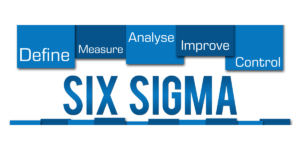Being a leader is not just about having a title or a position of authority. True leadership is about inspiring and guiding others towards a common goal while adapting to the ever-changing circumstances and needs of your team. Whether you’re a seasoned executive or a new manager, there is always room for improvement when it comes to leadership skills. One approach that has gained traction over the years is Situational Leadership. This leadership model emphasizes the importance of matching your leadership style to the needs of your team and the situation at hand. By using this framework, you can elevate your leadership skills from good to great, and become a more effective and influential leader in your organization. In this article, we will explore the basics of Situational Leadership and how you can apply it to your leadership style.

Understanding the Situational Leadership Model
The Situational Leadership Model was developed by Paul Hersey and Ken Blanchard in the late 1960s. The model is based on the idea that there is no one-size-fits-all leadership approach that works in all situations. Instead, leaders must adapt their leadership style to the needs of their team and the situation at hand. The model identifies four different leadership styles, each of which is appropriate for different levels of competence and commitment from team members.
The four leadership styles are:
- Directing: This style is appropriate for team members who are new to a task or lack the necessary skills and knowledge. In this style, the leader provides clear instructions and closely supervises the team member’s work.
- Coaching: This style is appropriate for team members who have some experience and knowledge but lack confidence or need additional guidance. In this style, the leader provides more support and guidance, while still being involved in decision-making.
- Supporting: This style is appropriate for team members who have the necessary skills and knowledge but lack confidence or motivation. In this style, the leader provides emotional support and praise, while allowing the team member to make decisions.
- Delegating: This style is appropriate for team members who have the necessary skills, knowledge, and motivation to complete a task independently. In this style, the leader provides minimal guidance and supervision, trusting the team member to make decisions and complete the task.
Applying Situational Leadership in the Workplace
To apply Situational Leadership in the workplace, leaders must first assess the competence and commitment level of each team member. This can be done through observation, feedback, and open communication. Once the leader has identified the appropriate leadership style for each team member, they can adjust their leadership approach to provide the necessary support and guidance.
For example, if a team member is new to a task and lacks the necessary skills and knowledge, the leader may use a Directing style, providing clear instructions and closely supervising the team member’s work. As the team member gains experience and knowledge, the leader may switch to a Coaching style, providing more support and guidance while still being involved in decision-making. Once the team member has the necessary skills and knowledge and is motivated to complete the task, the leader may switch to a Supporting or Delegating style, providing emotional support and minimal guidance or supervision.
Benefits of Situational Leadership for Leaders and Teams
Situational Leadership offers several benefits for both leaders and teams. By matching their leadership style to the needs of their team and the situation at hand, leaders can:
- Improve team performance and productivity
- Increase team member confidence and motivation
- Build trust and respect with team members
- Reduce conflict and misunderstandings
- Develop team member skills and knowledge
For teams, Situational Leadership can:
- Improve communication and collaboration
- Increase job satisfaction and engagement
- Develop team member skills and knowledge
- Improve overall team performance and productivity
Situational Leadership Examples in Real Life
Situational Leadership can be applied in a variety of situations and industries. For example, a sales manager may use a Directing style with a new salesperson who lacks experience and knowledge of the company’s products and services. As the salesperson gains experience and knowledge, the manager may switch to a Coaching style, providing more support and guidance while still being involved in decision-making. Once the salesperson has the necessary skills and knowledge and is motivated to meet sales targets, the manager may switch to a Supporting or Delegating style, providing emotional support and minimal guidance or supervision.
Another example of Situational Leadership in action is in a healthcare setting. A nurse may use a Directing style with a new nursing assistant who lacks experience and knowledge of patient care. As the nursing assistant gains experience and knowledge, the nurse may switch to a Coaching style, providing more support and guidance while still being involved in decision-making. Once the nursing assistant has the necessary skills and knowledge and is motivated to provide quality patient care, the nurse may switch to a Supporting or Delegating style, providing emotional support and minimal guidance or supervision.
Developing Your Situational Leadership Skills
Developing your Situational Leadership skills requires a combination of self-awareness, observation, feedback, and practice. To get started, consider the following steps:
- Assess your own leadership style and identify areas for improvement
- Observe your team members and assess their competence and commitment level
- Adjust your leadership style to match the needs of each team member and situation
- Seek feedback from team members to ensure your leadership style is effective
- Practice your Situational Leadership skills and seek opportunities to develop them further
Common Situational Leadership Mistakes and How to Avoid Them
While Situational Leadership can be a highly effective leadership approach, there are also some common mistakes that leaders make. These include:
- Failing to assess competence and commitment level accurately
- Using the wrong leadership style for the situation
- Failing to adjust leadership style as the situation changes
- Overreliance on one leadership style
- Failing to provide feedback and support to team members
To avoid these mistakes, leaders should:
- Take the time to assess competence and commitment level accurately
- Be flexible and adjust their leadership style as needed
- Seek feedback from team members and adjust their approach accordingly
- Use a variety of leadership styles as needed
- Provide ongoing feedback and support to team members
Best Practices for Situational Leadership
To be an effective Situational Leader, consider the following best practices:
- Develop strong communication and listening skills
- Build trust and respect with team members
- Provide ongoing feedback and support
- Be flexible and adaptable
- Continuously seek opportunities for growth and development
Tools and Resources for Situational Leadership Development
There are several tools and resources available to help you develop your Situational Leadership skills. These include:
- Situational Leadership® II training program
- Books and articles on Situational Leadership
- Online courses and webinars
- Leadership coaching and mentoring
Conclusion: Elevating Your Leadership Skills with Situational Leadership
Situational Leadership is a powerful framework that can help leaders elevate their leadership skills from good to great. By matching their leadership style to the needs of their team and the situation at hand, leaders can improve team performance, build trust and respect, and develop team member skills and knowledge. To be an effective Situational Leader, develop strong communication and listening skills, build trust and respect with team members, provide ongoing feedback and support, and continuously seek opportunities for growth and development. With practice and dedication, you can become a more effective and influential leader in your organization.









